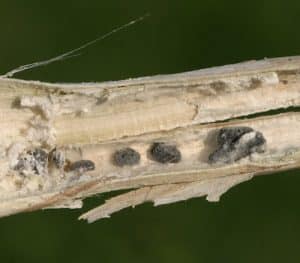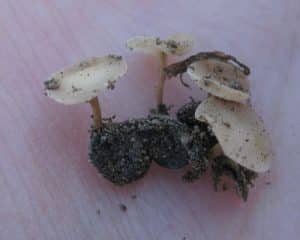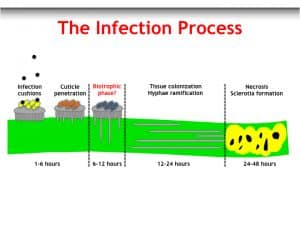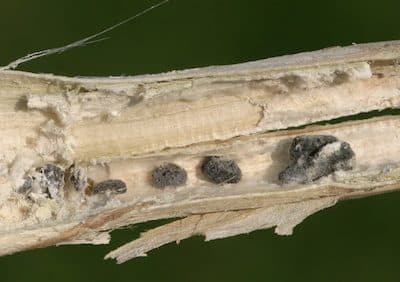The sclerotinia stem rot infection cycle begins with the little black sclerotia left soil the last time an infected crop was produced on that field. With warm soils and a couple of 10-15mm rains, sclerotia take up moisture and then germinate to form little mushrooms known as apothecia. These apothecia then release spores into the air. It takes about two to three weeks for sclerotia to germinate and release spores.


With moist conditions and a field history of sclerotinia, you can assume that spores are released by the millions and they’re everywhere. Spores that land on canola flower petals are of greatest concern. When infested petals fall into the canopy and land on canola leaves and stems, the infection stage begins. Spores germinate and the fungus grows on dead petals for a short time before coming into direct contact with the plant. Petal drop usually starts around 30% flowering. Once petals drop and start to decay, infection proceeds very quickly with lesions being visible in as little as 24 hours.
Here is what happens in those 24 hours:
- The fungus penetrates the waxy outer surface of the plant, the cuticle, within hours.
- Once the cuticle has been penetrated, the fungus grows within the plant tissue in a kind of stealth mode for a short, but critical, period that lasts 6 to 12 hours.
- The fungus then rapidly colonizes the plant as hyphae begin to spread throughout the plant over the next 12-24 hours. The fungus produces generous amounts of acid, digestive enzymes and toxins during this phase.
- After just one day, the first visual symptoms of plant tissue death (necrosis) appear.

Little can be done to save the plant once it has become infected, which is why fungicide applications target the petals to prevent spores from germinating once the petals drop and decay.
–Source: Dwayne Hegedus, research scientist at AAFC Saskatoon
Further reading:
Sclerotinia stem rot: Risk factors and spray timing
Quick comparison: Blackleg, clubroot and sclerotinia stem rot
Sclerotinia petal test
Sclerotinia stem rot management (detailed article)
